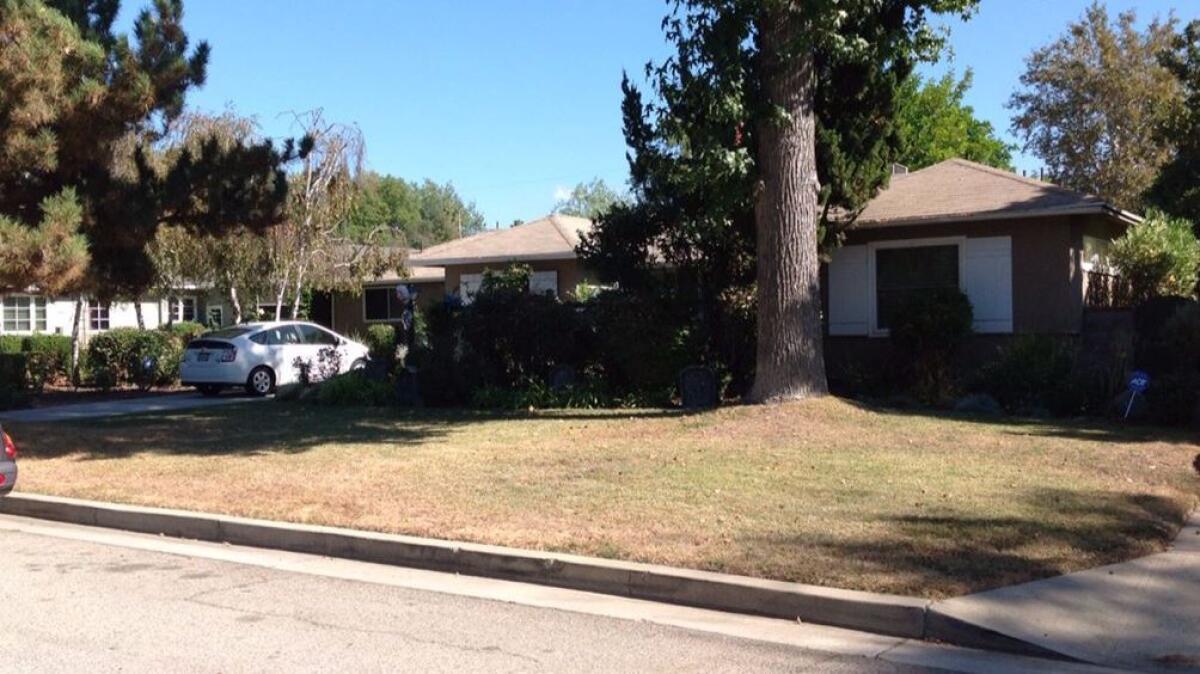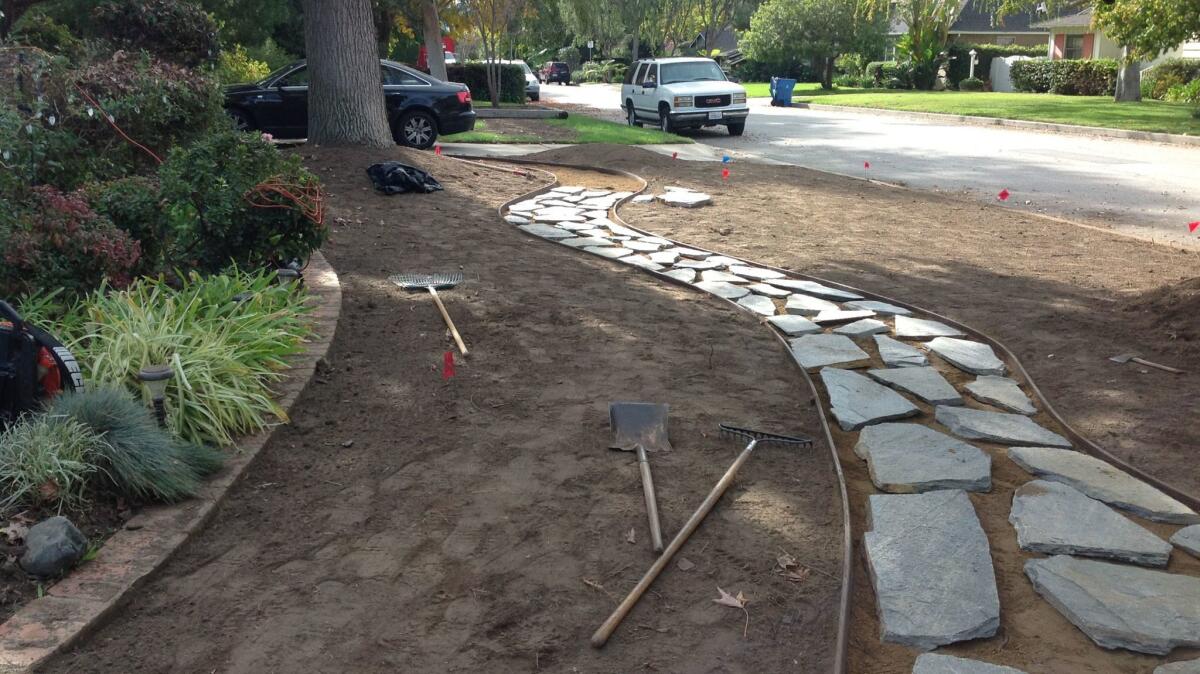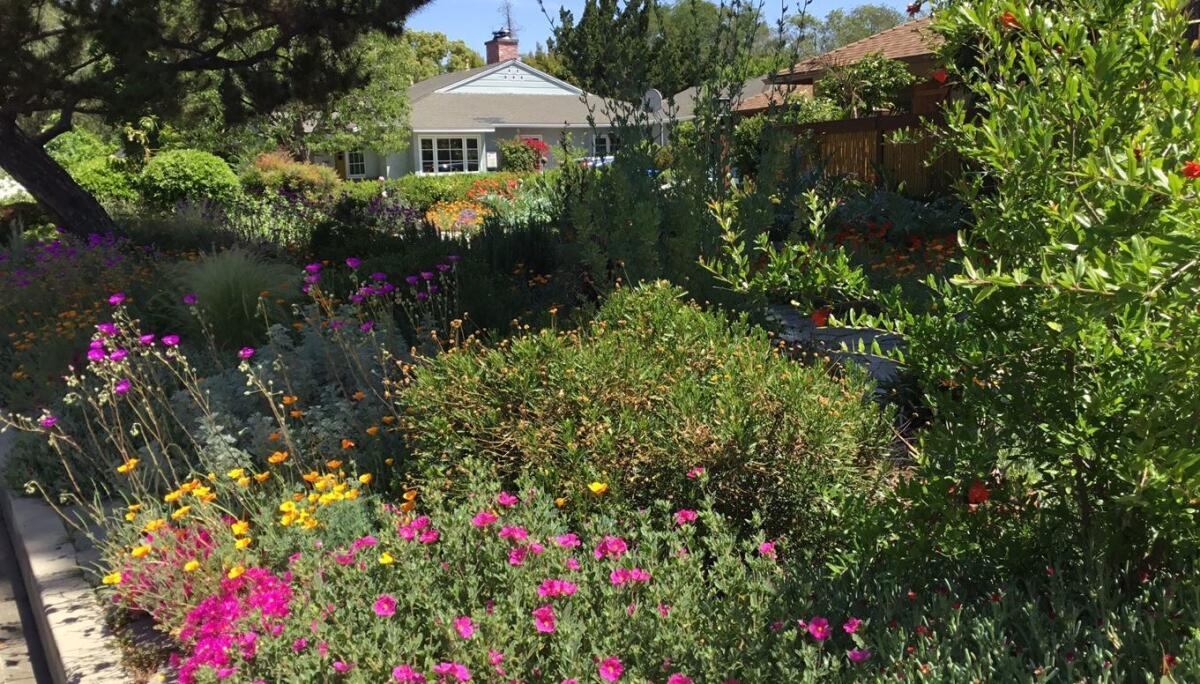From a dead lawn to an ‘evolving art piece’ where something is always in bloom
In September 2013, Giovanna Melton purchased a 1950 home in Valley Glen that was situated on a charming tree-lined street filled with traditional homes and lawns.
At the time, it was Los Angeles’s driest year on record, but Melton didn’t have to worry about watering her lawn.
The lawn was already dead.
Inspired by a free online gardening class she was taking at the time, Melton decided to remove the lawn and design a new frontyard following some of the principles of permaculture — the art of creating a self-sustaining, self-sufficent garden, which in Southern California means thriving on little to no water.
“There are so many good things to learn from permaculture,” Melton says of the practice that copies patterns found in nature. “One of the things I love the most is how it emphasizes the fact that nature is sloppy. We tend to be so tidy about everything.”
Her goal for the garden, she says, was to create something “water-wise, but also useful and inviting.”
After her gardener removed the turf, Melton added organic amendments to the soil and divided the yard into two zones, separated by a curving flagstone path. “Why not go with free curves when there are no straight lines in nature?” Melton says.
The free flowing pathway is meant to convey a river between the two areas — five barrels planted with herbs and edibles on one side and a surplus of Mediterranean and drought-tolerant plants on the other.
“The path goes from my driveway to my neighbor’s driveway,” Melton says. “It’s like walking through a park.”
The lawn was replaced with lavender, poppies, agave, rosemary and artemesia, among many others. She tried to cover as much bare soil as possible to keep weeds to a minimum and protect the soil. (In an effort to curb waste, Melton uses leaves from the sweet gum tree for mulch.)
As a costume designer, Melton is a big fan of color. So she broadcasts California wildflower seeds and plans on planting more gazanias and echinaceas, two drought-tolerant perennials with pretty blooms that attract butterflies.
“It’s an evolving art piece,” she says of her frontyard, which is always in bloom. (She did not apply for a turf rebate because there was a 10-week wait at the time).
Melton adds: “I created it so that people can use it. It makes me happy that my postman uses the path to walk from house to house.”

Before
When Giovanna Melton moved into the Valley Glen house in September 2013, the lawn was dead.

During
Melton’s gardener removed the lawn and installed a pathway that mimics a water feature. Melton did not use pesticides or a weed barrier. “I wanted to make sure the water would percolate down to the soil,” she says.

After
Something is always in bloom in Melton’s garden. “The most profuse blooming starts in March and goes through May,” she says. Although she was hoping to water once a week, Melton is watering twice a week for three to four minutes.

Plant list
Agave attenuata
Rock purslane
Euryops
Rosemary
Lavender
Matilija poppy
California poppy
Yellow yarrow
Hottentot fig
Artemesia
Various colors of gazanias
Lantana
Salvia red Texas sage
Mexican daisy bush
Graptoveria titubans
Blue spruce sedum
Cape blanco sedum
We’re highlighting yards and gardens that go from heavy water users to thrifty water sippers. If you’ve given your yard a drought-tolerant makeover, send “before” and “after” pictures to Home@latimes.com. We may include your yard in an upcoming Saturday section.
Twitter: @lisaboone19
For an easy way to follow the L.A. scene, bookmark L.A. at Home and join us on our Facebook page for home design, Twitter and Pinterest.
ALSO:
Photos: Ready to scratch the grass? Here are 27 inspiring lawn-free yards
How to landscape with pavers that are low on water, high on appeal
Go inside One Gun Ranch, a gorgeous Malibu oasis where alpacas roam free
